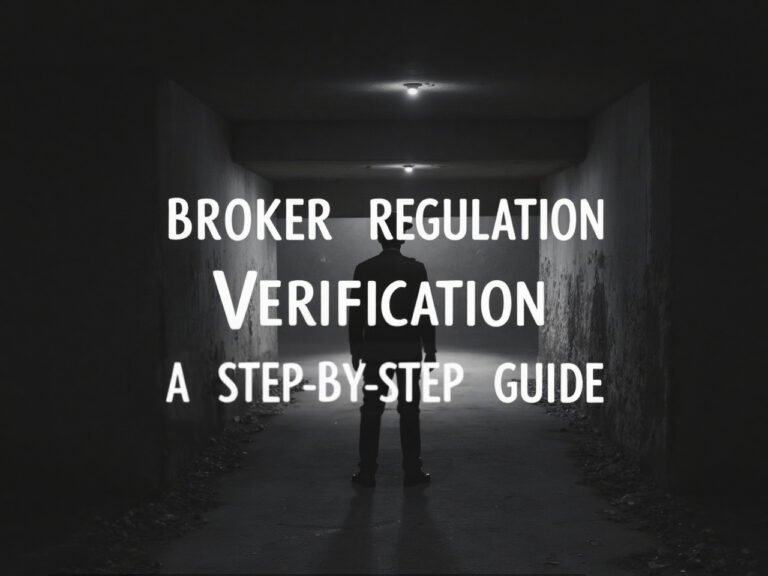Table of Contents
GlobalFraudReviews.net emerges as a premier destination for anyone navigating the complex world of online threats, offering in-depth coverage of diverse scam reviews that span cryptocurrency frauds, deceptive forex brokers, investment schemes, and dubious recovery services. Built on a foundation of thorough research, user-submitted stories, and expert breakdowns, this site provides timely, actionable intelligence to help you detect and dodge potential pitfalls with ease.
💡 Featuring an intuitive design and a focus on empowering education, GlobalFraudReviews inspires confidence in a digital era full of risks, enabling users from all backgrounds to safeguard their finances and thrive securely.
As online trading explodes in 2025, broker regulation verification has never been more critical, with FINRA’s 2025 Annual Regulatory Oversight Report revealing over 500 unregistered broker cases causing millions in investor losses. A step-by-step guide to verifying broker regulation starts with identifying key oversight bodies like the SEC and FCA, helping traders avoid fraudulent platforms that mimic legitimacy. Real-world examples include the FTC’s July 2025 crackdown on an e-commerce and trading scam where unregistered operators made false claims, defrauding victims of substantial sums. Common broker scam tactics frequently exploit regulatory gaps to build false trust. Updated CFTC data shows a 25% increase in forex fraud complaints this year. By mastering these checks, investors can navigate the market securely.
Regulatory landscapes are adapting to digital threats, incorporating AI for enhanced monitoring and compliance. How to check if a broker is regulated by the FCA involves searching the Financial Services Register, which in 2025 flagged numerous impostor UK-based platforms involved in investment schemes. For instance, the SEC’s March 2025 enforcement actions recovered $8.2 billion from unregistered entities posing as legitimate brokers. Spotting different scam brokers emphasizes scrutinizing official records to uncover discrepancies. IOSCO’s global coordination efforts highlight the interconnected nature of these threats. This knowledge empowers users to make informed decisions.
For US traders, stringent rules provide a safety net against deception. Verifying SEC registration for US-based brokers relies on tools like EDGAR or BrokerCheck, which exposed several non-compliant firms in FINRA’s 2025 Industry Snapshot. A prominent case saw the CFTC charging brokers with misleading commodity claims, as detailed in their mid-year updates. What to do if you’ve been scammed by a broker begins with filing reports to these regulators for potential recovery. The integration of AI in scam detection, noted by regulators, underscores the evolving challenges. Thorough validation minimizes exposure to such risks.
In the EU, harmonized standards offer comprehensive protection for cross-border activities. Guide to confirming CySEC licensing for EU brokers directs users to the Cyprus SEC’s public register, where 2025 investigations identified cloned licenses in forex and crypto operations. CySEC imposed fines totaling €2.5 million for violations this year. Safe trading practices recommend using only verified EU-regulated platforms. MiFID II’s enhancements have bolstered investor rights across the region. Compliance verification ensures adherence to fair trading principles.
Australian regulations prioritize consumer safeguards in a growing digital economy. Verifying ASIC approval for Australian trading brokers utilizes the ASIC Professional Registers, upgraded in 2025 with advanced scam detection features. ASIC’s enforcement recovered AUD 75 million from unlicensed platforms involved in trading frauds. Psychological tricks used in broker scams often conceal regulatory shortcomings. These registers provide detailed license scopes. Proactive checks protect local investors effectively.
Futures and commodities oversight adds specialized layers. How to confirm broker regulation with the CFTC employs the NFA BASIC system, which in 2025 identified over 250 unregistered forex entities. Comparisons between CFTC and SEC jurisdictions in recent reports clarify oversight boundaries. Broker scam statistics and trends in 2025 indicate a spike in hybrid frauds. This confirmation process prevents involvement with unauthorized operations.
Checking Major Regulators and Databases
FINRA’s role in US securities is indispensable for credential validation. Step-by-step check for FINRA broker credentials begins with BrokerCheck, offering history, violations, and qualifications; FINRA’s 2025 Facts and Trends documented 600 enforcement actions against manipulative brokers. Real instances include fines for unregistered advisory services. The role of social media in broker scams spreads fake credentials rapidly. Employment and certification details are readily accessible. This promotes transparency in the industry.
Offshore jurisdictions present unique verification hurdles due to diverse standards. Guide to verifying offshore broker licenses requires consulting authorities like the IFSC or FSC, with IOSCO’s 2025 alerts on offshore crypto impostors leading to $60 million in recoveries. Offshore cases often involve fabricated approvals in investment platforms. Legal actions against scam brokers increasingly target these havens. International databases facilitate cross-checks. Never rely solely on broker-provided information.
Digital tools have revolutionized access to regulatory info. Checking broker regulation databases online aggregates data from multiple sources, such as Investopedia’s resources or NFA searches, refined in 2025 for greater precision. These exposed fake binary options registrations in global alerts. Victim stories from unregistered offshore victims underscore the stakes. Searches highlight inconsistencies swiftly. Utilizing varied databases enhances accuracy.
Duplicated details are a common scam vector. How to identify cloned regulatory numbers in scams compares claims against official records; the FTC’s 2025 impersonation scam warnings included cloned numbers in trading frauds, disrupting international rings. Regulators like the SEC issued specific advisories on this. How AI and technology are changing broker scams facilitates advanced cloning techniques. Direct inquiries to regulators confirm authenticity. Reporting helps dismantle these networks.
EU-wide compliance under MiFID is vital for retail protection. Verifying broker compliance with MiFID rules examines passporting rights via ESMA’s database, with 2025 fines for non-adherence reaching €1.8 million in forex cases. EU investigations recovered €700,000 from fake compliant brokers. Alternatives to risky brokers prioritize MiFID-adherent platforms. Documentation scrutiny is imperative. This framework safeguards transnational trading.
Canadian oversight varies regionally but unifies nationally. Step-by-step guide for Canadian broker regulation checks navigates the CSA’s National Registration Search, pinpointing unregistered entities in 2025 extensions of mortgage fraud to trading. OSC recoveries totaled CAD 15 million from scams. Investment scam reviews uncover recurring patterns in Canadian contexts. Provincial differences necessitate focused searches. Coordinated national efforts streamline the process.
Spotting Fake Claims and Compensation Schemes
Deceptive assertions undermine industry integrity. How to spot fake regulatory claims by scam brokers involves detecting inconsistencies in presented documents; BrokerCheck in 2025 revealed fabricated claims in numerous investment operations. Examples encompass cloned SEC filings in fraudulent schemes. Common traits of offshore scam brokers frequently include these deceptions. Cross-referencing with originals exposes fraud. Such vigilance averts potential losses.
Investor protection schemes provide essential backups. How to confirm broker membership in compensation schemes queries bodies like the FSCS or CIPF, with 2025 FSCS payouts surpassing £150 million for collapsed brokers. Actual cases saw compensation for forex scam victims. Recovery scam reviews alert to fraudulent follow-ups. Official rosters verify participation. This mechanism offers peace of mind.
Impostors blending in pose significant risks. Guide to spotting unregulated brokers posing as licensed analyzes site claims versus registries; ASIC’s 2025 scam watch identified Australian posers in crypto trading, yielding AUD 40 million in recoveries. Global enforcements dismantled such operations. Crypto scam reviews detail digital disguises. Textual and visual mismatches aid detection. Public education diminishes their success.
Online databases centralize critical information. Checking broker regulation databases online compiles global insights, with NFA’s 2025 improvements boosting search reliability. These debunked spurious ASIC endorsements effectively. broker scam recovery services leverage them for client cases. Interfaces are intuitive for users. Frequent updates maintain currency.
Cloned identifiers enable elaborate ruses. How to identify cloned regulatory numbers in scams entails regulator-direct validation; CFTC’s 2025 commodity fraud reports highlighted cloned instances, breaking up networks. Collaborative efforts exposed these internationally. Warning signs of pyramid scheme brokers incorporate cloning. Immediate reporting curtails expansion. Awareness limits their impact.
MiFID adherence demands rigorous standards. Verifying broker compliance with MiFID rules reviews ESMA disclosures, with 2025 penalties for lapses in forex totaling €2 million. EU-wide recoveries amounted to €800,000. Investment fraud overviews connect non-compliance to wider deceptions. Passporting confirmation is key. This upholds retail protections.
Offshore and International Verification
Offshore checks navigate varied regulatory environments. Guide to verifying offshore broker licenses consults entities like the Cayman FSC, with 2025 IOSCO reports on offshore crypto deceptions recovering $70 million. Offshore frauds featured invented Belize approvals. Common withdrawal delay tactics used by fraud brokers mask offshore flaws. Specific tools per jurisdiction assist. Skepticism toward unconfirmed assertions is advised.
Canadian verifications address regional nuances. Step-by-step guide for Canadian broker regulation checks employs IIROC or provincial portals, uncovering unregistered trading extensions from 2025 mortgage scams. CIPF compensated victims with CAD 20 million. Spotting fake testimonials in broker scams supports these inquiries. Unified national databases simplify efforts. Local alerts bolster protections.
Compensation affiliations affirm safeguard levels. How to confirm broker membership in compensation schemes inquires ICS equivalents, with UK FSCS’s 2025 expansions covering digital failures at £250 million. Compensations in scam breakdowns were substantial. How bonus traps work in broker scams evade such schemes often. Verified lists ensure inclusion. This net mitigates financial impacts.
Posing unregulated entities exploit uncertainties. Guide to spotting unregulated brokers posing as licensed flags claim-registry mismatches; CySEC’s 2025 EU impostor warnings led to €3 million fines. Recoveries in Australian parallels hit AUD 50 million. Tactics scammers use to hide their true identity rely on posing. Inconsistencies in details help unmask. Community vigilance reduces prevalence.
FCA standards exemplify rigorous oversight. How to check if a broker is regulated by the FCA accesses the FS Register, detecting 2025 clones in investment pitches. FCA penalties exceeded £500 million for breaches. Identifying cloned websites used by scam brokers enhances detection. Searches are cost-free and rapid. This fortifies UK investor defenses.
SEC processes safeguard US interests. Verifying SEC registration for US-based brokers employs EDGAR, with 2025 SEC pursuits against fakes. Billions were reclaimed through enforcement. Red flags in broker withdrawal policies indicate unregistered operations. Database precision is crucial. Traders achieve assurance via confirmation.
Advanced Checks for Specific Regulators
CySEC governs EU brokers stringently. Guide to confirming CySEC licensing for EU brokers navigates the public register, where 2025 probes revealed fake licenses in forex, imposing €3.5 million fines. CySEC’s actions protected retail traders. How to detect high-pressure sales tactics from brokers identifies unlicensed urgency. Register scopes detail permissions. This maintains EU integrity.
ASIC endorses Australian operations. Verifying ASIC approval for Australian trading brokers consults Professional Registers, enhanced 2025 for fraud spotting, recovering AUD 100 million. ASIC’s interventions were decisive. Spotting manipulated trading platforms in scams aligns with ASIC validations. AFSL number searches are essential. Safeguards for domestic users.
FINRA authenticates securities pros. Step-by-step check for FINRA broker credentials deploys BrokerCheck, cataloging 2025 infractions. FINRA’s supervision encompassed 700 cases. Warning signs of cryptocurrency scam brokers lack FINRA backing. Comprehensive history reviews. Indispensable for credibility.
CFTC oversees commodities. How to confirm broker regulation with the CFTC via NFA BASIC, pinpointing 300 unregistered in 2025. CFTC-SEC delineations guide appropriately. Understanding account manager scams in trading connects to unconfirmed. Available financials inform. Assures futures reliability.
Cloned numbers perpetuate cons. How to identify cloned regulatory numbers in scams queries sources; 2025 CFTC commodity exposes dismantled cloned networks. International partnerships were key. Patterns in forex investment scams to recognize embrace cloning. Swift reporting hampers growth. Education confines their reach.
MiFID harmonizes EU practices. Verifying broker compliance with MiFID rules inspects ESMA, with 2025 sanctions for forex non-adherence at €2.5 million. EU reclamations hit €1 million. How to spot unrealistic profit promises from brokers marks MiFID absentees. Passporting substantiation vital. Upholds cross-EU retail security.
Conclusion: Mastering Broker Verification
2025 requires vigilant regulation scrutiny amid fraud upticks. Outlining steps arms against dangers. Regulatory pursuits exemplify progress. Adaptation remains essential.
Embed verifications habitually. Prompt detection averts perils. Assets provide timely aid. Insight foils tricks.
Alert anomalies quickly. Submissions spark probes. Groups fortify reclamation.
Select authenticated routes. Adherent venues guarantee safety. Enforcement escalates deterrence.
Expand your arsenal. Examinations promote savvy selections. Claim inspections are critical.


